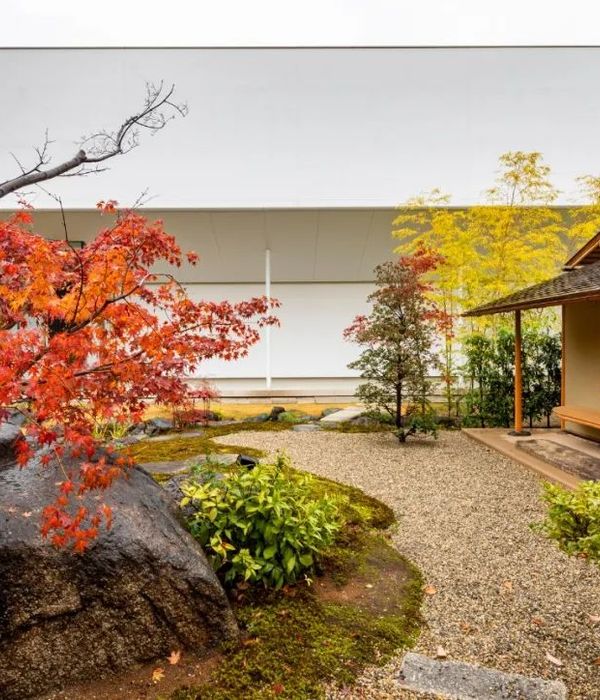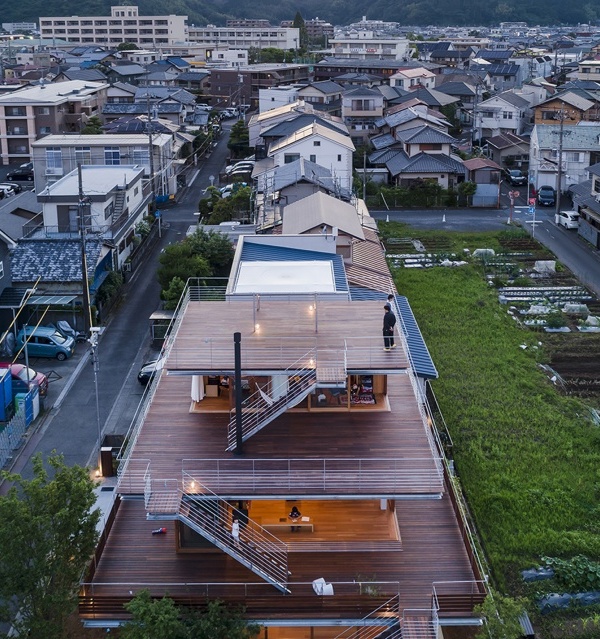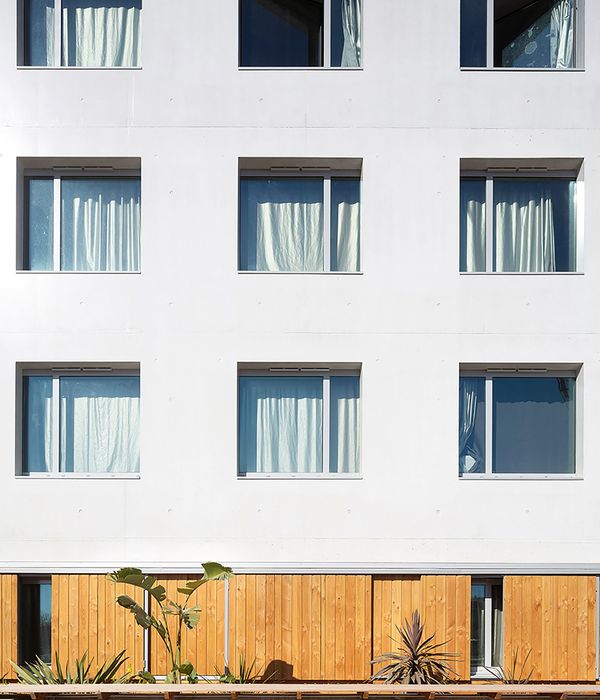▲
关注
“
搜建筑
”
在过去几年里,包括南非在内的世界各地的学校都开始采用新的学习模式。这种转变是技术进步、获取和传播信息的新方式以及向合作或混合学习的教学转变的结果。
帕克兰兹学院(Parklands College)是位于开普敦(Cape Town)的一所苹果(Apple)杰出学校,位于该国创新教育技术的前沿,利用这些方法培养学生的全球能力和技能,使他们能够建设自己的未来。为此,学院最近扩建了校园,包括一个新的“创新中心”,以适应各种教学方法,所有这些都在一个创新的,以科技为基础的环境。
Over the past several years, schools around the world, including South Africa have begun to embrace new modes of learning. This shift has emerged as a result of technological advancements, new ways of accessing and disseminating information, as well as a pedagogical shift towards collaborative or blended learning.Parklands College, an Apple Distinguished School in Cape Town, is at the forefront of innovative education techniques in the country and uses these methods to develop global competencies and skills in its learners so they can build their own futures. In aid of this, the College recently expanded its campus to include a new ‘Innovation Centre’ designed to accommodate a variety of teaching methods all within an innovative, technology-based environment.
Parklands学院和发展伙伴Milnerton Estates委托多学科设计工作室dhk Architects处理该项目,该工作室基于公司的良好记录和对未来前瞻性教育空间的共同兴趣。该项目的目的是在现有的校园基础上创建一个实质性的额外空间,完全致力于促进这些先进的教学技术和理念。
Parklands College, along with development partner Milnerton Estates, commissioned multidisciplinary design studio dhk Architects to tackle the project based on the firm’s sound track record and mutual interest in the future of forward-thinking education spaces. The brief was to create a substantial addition to its existing campus, dedicated entirely to spaces that facilitate these progressive teaching techniques and philosophies.
解决问题空间的渐进式方法--一个关键的重点领域涉及创造空间,以促进小组工作和将学科(如科学、技术、工程和数学)和基于艺术的学科结合到创造性解决问题的活动中的课程。此外,作为当地新兴机器人领域的领导者,另一个重点领域是创建车间式的学习空间,以促进基于创业和职业的软技能培训。此外,相互联系、透明度和运动等主题对中心的精神面貌至关重要。
A progressive approach to problem-solving spaces - A key focus area involved creating spaces to facilitate group work and classes that combine subjects (such as science, technology, engineering and mathematics) and art-based subjects into creative problem-solving activities. Additionally, as a local leader in the emerging field of robotics, another focus area was on creating workshop-style learning spaces to facilitate soft entrepreneurial- and vocational-based skills training. Furthermore, themes of interconnectivity, transparency and movement were vital to the ethos of the centre.
在考虑何种“空间仪器”可以促进这种新的学习模式,以及它们如何偏离传统环境时,港大与学院及专业团队举办了一系列工作坊,测试一系列的配置,以平衡刺激和物理连接空间的需求与安静专注的时刻,或仔细的声学控制的需求;空间平衡了一种包容感和一种连接感。最终的解决方案是在不同大小的相互连接的空间集群中找到的,这些空间通常毗邻或由流通空间连接,这些空间有机会成为休闲区域或学习环境的扩展。
When considering what sort of ‘spatial instruments’ could facilitate such new modes of learning and how they might deviate from traditional environments, dhk conducted a series of workshops with the College and professional team, testing a range of configurations that balanced the need for stimulating and physically connected spaces with the need for moments of quiet focus, or careful acoustic control; spaces that balance a sense of containment with a feeling of connectedness. The solution was ultimately found in clusters of interconnected spaces of varying sizes, often adjacent to or connected by circulation spaces, which have the opportunity to become recreational areas or extensions of the learning environment.
通过和谐的扩建促进流动——概念上,建筑被设想为两个由庭院分隔的固体直线翼;南翼呼应了学院的四合院,而微微弯曲的北翼则为运动场提供了一个独特的、引人注目的背景。两翼同时被一个大的、钢和玻璃的双层休闲中庭连接在一起,它恰当地命名为“中央车站”,形成了建筑的核心。
中庭不仅是一个中心活动中心,还可以用于非正式聚会、即兴表演、自学和沉浸式数字体验等活动。总的来说,建筑设计是现代的,优雅的简单。它与现有的校园建筑风格截然不同,但仍然符合整体的正交规划。建筑的形式受到优化空间关系的强烈推动,同时坚持良好的环境设计的基本原则——特别是内部环境的舒适度。
Facilitating flow with a sympathetic extension - Conceptually, the building was envisioned as two solid rectilinear wings separated by courtyards; the southern wing responding to the College quadrangle and the gently bending northern wing providing a distinctive, striking backdrop to the playing fields. The two wings are simultaneously split and bound together by a large, steel-and-glass double-volume recreational atrium aptly named ‘Grand Central’, which forms the nucleus of the building. Not only does the atrium serve as a central movement hub, but it is also used for activities such as informal gatherings, impromptu performances, self-study and immersive digital experiences. Overall, the architectural design is contemporary and elegantly simple. It makes a distinct departure from the existing style of the campus buildings, yet remains sympathetic to the overall, orthogonal planning. The form of the building was strongly driven by optimising spatial relationships while adhering to the basic tenets of good environmental design - particularly internal environmental comfort.
为健康而建——研究表明,没有自然光、新鲜空气、良好的音响效果和良好的热舒适,有意义的参与能力和深度学习的机会就会打折扣(我们认为与户外的联系同样重要!)因此,砖和混凝土用于主要学习空间,面向南北,主要是出于稳定温度波动的热质量需求。北部墙面通过使用大窗户、深窗和明亮的架子创建不规则的图案,形成有趣的模块化连接。
中央中庭主要是一个运动和休闲空间,通过使用钢和玻璃使其与众不同,并被定制的铝遮光罩覆盖。建筑也可以自己“呼吸”;所有较大的房间都配备了C0²传感器和自动开窗系统,测量空气质量,并自动逐步打开窗户,以优化它,消除对空调的需要。此外,声学性能得到了重要的优先考虑,特别设计的系统与照明相结合,对学习空间的成功至关重要。
Building for wellbeing - Research has shown that without natural daylight, fresh air, good acoustics, and good thermal comfort, the ability to engage meaningfully and the opportunity for deep learning are compromised (we consider the connection to the outdoors to be equally vital!). Therefore, the use of brick and concrete for the primary learning spaces which face north and south were driven predominantly by the need for thermal mass to stabilize temperature fluctuations. The north façade was given a playful, modular articulation by creating an irregular pattern using large windows, deep reveals and light shelves. The central atrium, being predominantly a movement and recreational space, was made distinct by the use of steel and glass, shrouded by a bespoke aluminium sunscreen. The building also ‘breathes’ on its own; all the larger rooms are fitted with C0² sensors and automated window opening systems which measure the air quality and automatically open the windows incrementally to optimise it and eliminate the need for air-conditioning. Furthermore, acoustic performance was given significant priority and the specially designed system, integrated with the lighting, is vital to the success of the learning spaces.
灵活的空间促进个人和团体的参与——建筑的南翼和东翼由三个大型协作室共同构成,每个协作室都有一系列沿着其侧翼聚集的小型分离舱。可调节和多功能,房间的设计可容纳多达150名学习者,但也可以通过滑动屏幕进行调整,成为2至3个较小的学习空间,可容纳30至40名学习者。
Flexible spaces foster individual and group engagement - Collectively, forming the southern and eastern wings of the building are three large collaboration rooms, each with a series of smaller break-away pods clustered along their flanks. Adjustable and versatile, the rooms are designed to accommodate up to 150 learners but can also be adapted via sliding screens to become two to three smaller learning spaces for 30 to 40 learners. A series of several small breakaway 'pods' feeds off the larger collaboration rooms and allow learners to engage in smaller groups or quiet self-study. These back onto two inner courtyards which separate them from the northern wing; a string of non-specific classrooms intentionally designed square to ensure that there is no front or back. Two larger workshop-style learning spaces occupy the ground floor of the northern wing and are dubbed the ‘Robotics Lab’ and ‘Experium’ (Maker Space).
这些空间的想法是为学习者提供机会,以原型解决现实世界的问题,使用数字电子、设计、工艺和建筑。在上层,分离的豆荚被表达为悬浮在庭院上方的悬空盒子,只被混凝土走道的顶部和底部紧紧抓住。
最后,一个连续的循环路线以三维图形“8”的形式贯穿整个建筑,并积极地填充各种偶然的“聚会时刻”。循环路线的设计是为了确保大量学习者的自由活动,同时提供建筑各个空间之间的视觉联系。
The idea is for these spaces to provide learners with opportunities to prototype solutions to real-world problems using digital electronics, design, crafting and building. On the upper level, breakaway pods are expressed as suspended boxes that hover above the courtyards, clutched only by the top and bottom of the concrete walkway. Lastly, a continuous circulation route loops through the entire building in a three-dimensional figure '8' and is actively populated with a variety of incidental ‘hangout moments’. The circulation route was designed to ensure the free movement of large numbers of learners while simultaneously providing visual connections between the building's various spaces.
Meaning & innovation embedded in the design - Throughout the building, there are several playful details. One is the distinctive, perforated aluminium screen which bathes the atrium in dappled light. The embedded pattern on the screen is a subtle reference to the concept of coding, where holes of different sizes create a sense of openness but also form vertical streams of light spots which reveal words reflecting the ethos of the building – ‘discover’ and ‘innovate’. Additionally, the DNA-inspired pendant light-fittings in the atrium remind learners of the human code within us.
重要的是,这些在灵活性和多功能方面的巨大飞跃不仅得益于建筑,还得益于创新的家具和智能的存储,它们在模式转换中发挥了重要的支持作用。其中包括可移动的家具,它们可以快速地以不同的排列方式排列,无论是由于轻便还是由于车轮的机动性。
这可以是作为座位或邀请角落和栖木进行各种不同的活动的存储空间。另一个例子是带有屏幕、Wi-Fi点和其他技术的彩色智能隔音板。越来越多的人需要移动,坐,站,甚至躺下和学习,通过吧台,便便,脚垫,大楼梯和洞穴一样的角落。
Importantly, these big leaps in flexibility and multi-functionality are made possible not only by the architecture but also through innovative furniture and clever storage which play a significant support role in mode shifting. These include mobile furniture items that can be quickly arranged in various permutations, whether by virtue of lightness or manoeuvrability courtesy of wheels. This could be storage that doubles as seating or inviting nooks and perches to engage in a variety of different activities. Another example is colourful smart acoustic panels that house screens, Wi-Fi points and other technologies. Increasingly, the need to move, sit, stand, and even lie down and learn, is being facilitated via bar counters, poofs, ottomans, large staircases, and cave-like nooks.
虽然新冠疫情暂停了该建筑的开放年,但当学生们返回校园时,新中心受到了赞扬。适应性空间允许教师增加教室的面积,以确保社会距离,而不需要两间教室和两名教师每节课。
此外,包括绿屏分离房间在内的数字连接使学习者能够轻松连接,与教师保持距离,但也能参与到内容中(并允许教师提前录制课程)。最后,所有的教学空间和分离房间都有优秀的声学,自然光和无眩光的交叉通风,这使得空间在使用技术的同时保持合作的理想
While the pandemic put a pause on the building’s opening year, the new centre was praised when learners did return to the campus. The adaptable spaces allowed teachers to increase the floor area of their classrooms to ensure social distancing without needing two classrooms and two teachers for each lesson. Also, the digital connectivity including the green screen breakaway rooms allowed learners to connect easily and stay at a distance from teachers but also remain engaged in the content (and allowed teachers to pre-record lessons). Lastly, all teaching spaces and breakaway rooms have excellent acoustics, natural light and cross ventilation without glare, which made the spaces ideal for using of technology while remaining in collaboration.
平面图
立面图
建筑师:dhk Architects
地点:南非
面积:4010 m²
年份:2020
推荐关注·专业平台
新材料、新做法、新知识
本资料声明:
1.本文为建筑设计技术分析,仅供欣赏学习。
2.本资料为要约邀请,不视为要约,所有政府、政策信息均来源于官方披露信息,具体以实物、政府主管部门批准文件及买卖双方签订的商品房买卖合同约定为准。如有变化恕不另行通知。
3.因编辑需要,文字和图片无必然联系,仅供读者参考;
—— 作品展示、
访谈、
招聘
——
搜建筑·矩阵平台
合作、宣传、投稿
请加
推荐一个
专业的地产+建筑平台
每天都有新内容
{{item.text_origin}}












